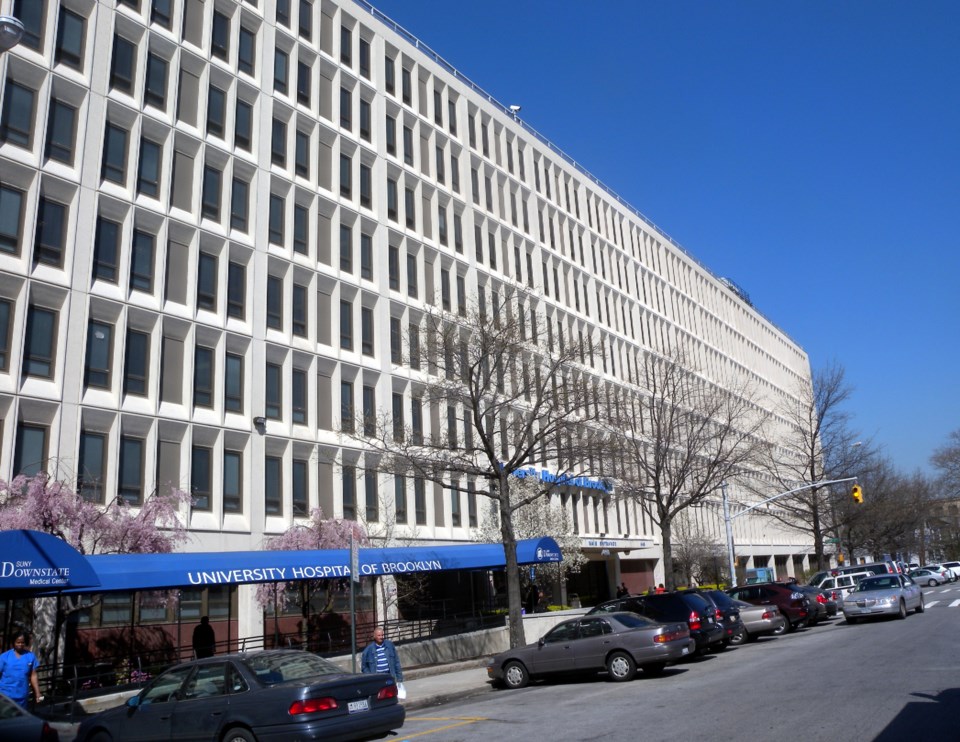“Beep, Beep, Beep” sounded the two-minute timer, cutting off many of the attendees at a February meeting on how to spend over $750 million to improve SUNY Downstate Health Sciences University.
I have the privilege of being a student at SUNY Downstate, and the love that faculty, doctors, nurses, staff, students, patients and the community share for this institution has never been questioned. The February meeting was a fight for equality in healthcare. It was a fight for those who cannot fight for themselves. It was a fight for our children to have a hospital that can provide what they need, when they need it. It was a fight for parking, more beds, future medical students, better pay and our future.
We all deserve healthcare—no matter our social status.
We all deserve healthcare—no matter our background.
We matter.
The community stands together, and this thought was repeated throughout the night and it is only right to include it here: this community stands ten toes down.
I want to highlight the concerns raised by third- and fourth-year medical students—students who love SUNY Downstate and were there to advocate for better equipment. They advocated for new equipment to improve student learning, and so patients receive care at Downstate, rather than being referred across town for procedures that could be performed in-house.
Doctors advocated for a larger hospital. One doctor stated that he is training some of the best doctors, yet when they graduate, there are not enough positions to keep them. Why are we training the best doctors and sending them elsewhere? Expanding the hospital would allow us to retain talent and provide more care for the community.
Pediatricians also called attention to the lack of resources available to patients and their families. In particular, doctors specializing in autism care advocate for better at-home resources and support for parents. These doctors want to send parents home prepared to care for their children, but there are not enough staff to provide the necessary resources.
And yes, I know what you’re thinking—surely, despite all the positive advocacy, patients shared adverse experiences. But here’s the thing: every negative comment came from people wanting to improve SUNY Downstate.
One long-time area resident shared that when he was near death, he was admitted to SUNY Downstate. He praised the incredible care provided by the doctors, but revealed a heartbreaking truth: he went without a shower for a week because there was no hot water, and the nurses had to provide him with bottled water as the drinking water was not deemed safe.
These doctors continue to provide outstanding care even without the resources they need. But should they have to? Should the state not provide them with essential resources to ensure the best patient experience?
Another patient voiced concerns about the limited parking. He stood at the microphone and said, “Cars are not evil.” That statement has stayed with me for days. He pointed out that doctors, nurses and staff—those we rely on for care—struggle to find parking. Patients who need urgent attention should not have to worry about parking before seeing a doctor. The solution? A new parking structure that accommodates everyone.
“SUNY Downstate changes lives,” a formerly-incarcerated man said about the life-saving care he received after suffering from poor dietary conditions in prison. Not only did the hospital save his life, but it also provided him with an opportunity to help other formerly incarcerated individuals learn about nutrition and self-care.
One resident at the meeting said: “Think big. Think as big as you can.” She then proposed to build a community pool to teach residents how to swim, a skill that could save lives during the summer. In addition, she wanted a community garden where residents could grow fresh produce and a rooftop waiting area with a view that offers a peaceful space for patients and families.
In addition to the need for more staff and hospital beds, the hospital should make sure patients don’t spend an entire day at the hospital just to be seen. Many people call out of work for doctor’s appointments because they know it will take all day. More staff = faster care = healthier communities.
Fixing the hospital complex is about more than money, it is about saving a community. SUNY Downstate is a lifeline to patient care serving the 2.6 million residents of Brooklyn. It is not just about profit, but about taking care of an underserved community. That is why hiring people who can oversee the responsible distribution of this money is essential, to ensure that the hospital is never at risk of closing again.
SUNY Downstate has been open since 1966. It is a well-respected institution that has inspired children in the community to one day become doctors, nurses and healthcare leaders. It is also home to the only kidney transplant program in Brooklyn. This hospital is worth investing in. This community is worth fighting for. SUNY Downstate provides low-income Medicaid patients access to healthcare. Every reason given for this funding is not selfish—it is for the people who live in and rely on this hospital. This is the kind of community you cannot fabricate—this is a built community.
So I ask you—why not fund a community that wants to stay right where they are? Would you stand ten toes down with SUNY Downstate in this fight for the future of our hospital—one that you might one day need?
Meliah McPhie is a Brooklyn resident who is pursuing her master’s degree at SUNY Downstate Health Sciences University.




